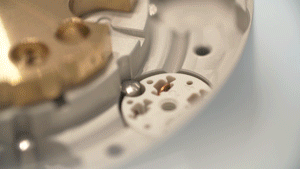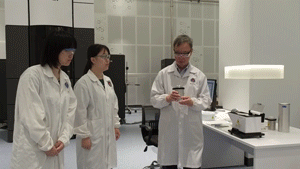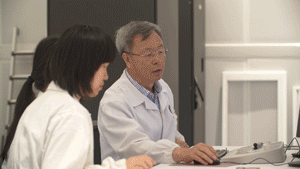With the consistent support from the Shenzhen Municipal Government, the SUSTech Cryo-Electron Microscopy Innovation & Research Center (Cyro-EM Center) will officially open later this year. It will be the most advanced cryo-microscope laboratory in China.

The Inception of Cyro-EM Center
Detailed plans to establish the center were put into place in June 2017, and leading structural biologist Yang Maojun was invited to undertake the project. The center has since attracted top experts and young professionals from across the globe, including Sun Senfang, the only Chinese Academy of Sciences member specializing in cryo-microscopy. He is also China’s first researcher to work on biomacromolecules with cryo-electron microscopes.
Four months after the inception of the Cyro-EM Center, three scientists received the 2017 Nobel Prize in Chemistry for their work on cryo-electron microscopy. The award result proves SUSTech’s advanced vision on academic trends. Furthermore, one of the 2017 Nobel Laureates in Chemistry, Joachim Frank, has accepted President Chen Shiyi’s invitation to visit SUSTech next month. Chen and Frank will also discuss collaborative opportunities between SUSTech and Columbia University.

About the Cyro-EM Center
The official opening of the SUSTech Cyro-EM Center will be followed by an international conference with most of the world’s top cryo-electron microscopy experts present, such as another laureate of the 2017 Nobel Prize in Chemistry — Professor Richard Henderson from Medical Research Council’s Laboratory of Molecular Biology (MRC-LMB) at Cambridge Biomedical Campus.
SUSTech has had many in-depth discussions with Professor Henderson and conducted detailed planning regarding what types of cryo-electron microscopes to purchase. After considering the compatibility of different microscopes, the laboratory will be equipped with six 300 kilovolts (KV) cryo-microscopes, two 200 KV cryo-microscopes, two 120 KV cryo-microscopes, a total of 10 transmission electron microscopes (TEMs) and 71 supporting devices. One cryo-microscope at 120 KV will be in operation from early July, while two of the cryo-microscopes at 300 KV will take part in trial tests in August. In the meantime, researchers at the laboratory will also strive to overcome the high cost, complicated operational procedures, and user-unfriendly control programs of current cryo-electron microscopes, in order to prepare for the full operation of the laboratory.

Missions of Cyro-EM Center
The center will carry out interdisciplinary research projects with the abovementioned devices, hoping to make new breakthroughs in the software, hardware, and application of cryo-electron microscopes. For instance, it will collaborate with the X-ray Crystallography Platform in the Department of Biology, as well as the Proteomics and the Signal Transduction Platform in the Department of Chemistry on protein science research. The collaboration will further build an interdisciplinary network of structural biology, cellular biology, chemistry, materials science, and neuroscience.
At the 2018 Future Forum x Cities Summit Shenzhen, President Chen Shiyi pointed out Shenzhen’s lack of (applied) basic research ability compared to Silicon Valley. The opening of the SUSTech Cyro-EM Center will change the status quo. By focusing on critical illness diagnosis, new drug development, precision medicine, functional materials research, and the development of basic academic disciplines, the laboratory will promote the development of new materials, higher education, medical treatment, public health, and the wellness industry. The laboratory will also serve the strategic needs of the country and benefit all 1.4 billion Chinese people.

About Cryo-Electron Microscopy
Cryo-Electron Microscopy has changed research methodology in many fields of biology. Since this technology has helped researchers overcome many difficulties and achieve breakthroughs in the structural analysis of biomolecules, the Nobel Committee calls cryo-electron microscopy as “the very thing that takes biochemistry to a whole new level.” Researchers used to think that electron microscopes could only be used to study the images of nonviable biological samples since the highly intensive electron beam would severely damage the samples. This all changed when cryo-electron microscopy came into the picture.
Now, researchers can immediately freeze the viable bio-macromolecules to the boiling point of liquid nitrogen (−195.8 °C or −320.4 °F). The samples will be kept and transferred at such temperature, so their original forms can be maintained as much as possible. Moreover, the dynamic process of biological change that once could not be seen can now be visualized through cryo-electron microscopes. This could bring a positive influence on drug research and development, as well as understanding life process on the molecular level.

Link to a promotional video on SUSTesh’s Cyro-EM Center (in Chinese; please click the link below patiently wait for the commercials before the official video):
https://v.qq.com/x/page/c0703zworly.html?
Proofread ByChris Edwards
Photo ByCyro-EM Center